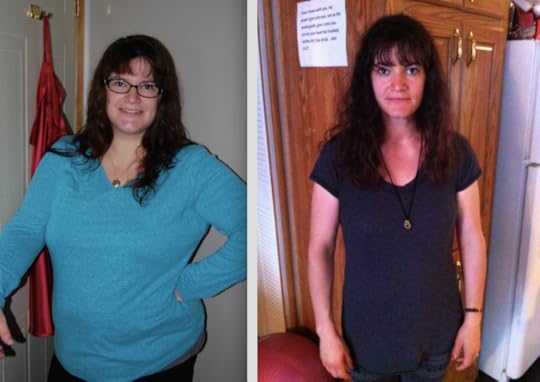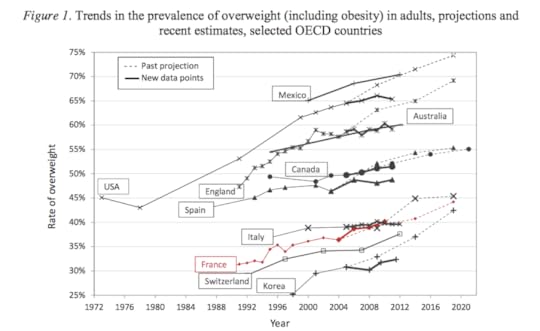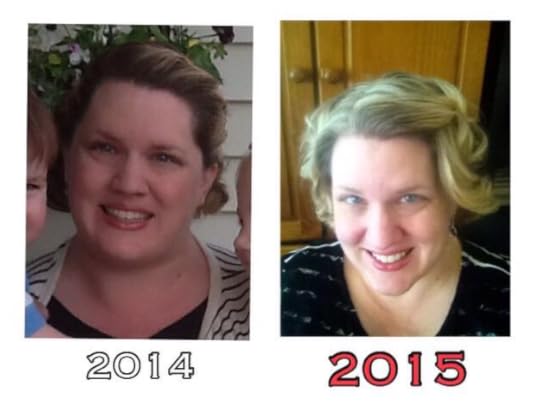William Davis's Blog: Dr. Davis Infinite Health Blog, page 135
May 30, 2015
The wheat and grain lobby is looking desperate

The wheat and grain lobby is at it again, using their increasingly supportive medium, The Huffington Post:
Gluten Intolerance Isn’t Caused By Frankenwheat Because It Doesn’t Exist
(It is odd that Huffington Post has, in effect, become the sounding board for the wheat and grain industry to post it’s propaganda pieces, even awful and flawed analyses like this article. I smell a rat.)
From the article:
“‘There’s no such thing as Frankenwheat.’
“Chibbar’s research involved studying wheat varieties that have been planted in North America since the 19th century. They were grown and analyzed in test plots that have been maintained since 1989. The original intent was to catalogue improvements made in yield and time to harvest since the 1860s when homesteaders planted Ontario-originated Red Fife on their newly broken land.
“But the focus shifted when Chibbar began to notice claims from health advisers that new wheat varieties contained high protein levels and different kinds of starch that were contributing to gluten intolerance.
“‘A lot of questions started to arise that the modern wheat is very different.’
“Chibbar decided to find out if protein levels really have increased.
“The answer was yes. Protein levels have increased by about 0.01 per cent a year.
“‘That’s one per cent in a 100 years,’ said Chibbar. ‘The whole thing about protein levels having significantly increased, and that’s why we’re seeing the negative effects of wheat, that did not stand out.'”
Read the Wheat Belly books, read the discussions here on the Wheat Belly Blog or the Wheat Belly Facebook page, or listen to the hundreds of media interviews I have given, and you will NEVER hear me argue that the protein or carbohydrate content of wheat has changed. In fact, there are instances in which the protein content of modern wheat strains has dropped, not increased. While modern wheat tends to contain around 14 to 18% protein, for example, some strains of emmer wheat can contain up to 28% protein. And I know of no data showing that the carbohydrate content of wheat has increased or decreased, and I never claimed that it has.
But there is no argument that wheat has been changed. Chibbar (the wheat researcher) even concedes this point: “Chibbar said the mix of the individual proteins in the gluten may have changed slightly.”
The changes are more than slight, however, and they involve more than the thousands of genes coding for gluten. Just look at a wheat field and you will see the obvious changes: it stands 18 inches tall, not 5 feet; the stalk is thicker; the seeds are larger, the seed head longer. Just those few changes involve dozens of gene changes. And those are just the outward differences. There are also many changes in the genetics and thereby the components of wheat, all documented in hundreds of research studies from the agricultural genetics world. This is not in question: any agricultural geneticist is familiar with at least some of these studies. There have been changes, for example, in the gibberellin gene that codes for height, the gliadin alpha-9 for the form of gliadin that is the most potent trigger for celiac disease, changers in serpins, thioreductases, alpha amylase, and other allergy-provoking wheat proteins, all introduced by human intervention.
Whether the changes add up to 0.5%, 1.0%, or 3% is immaterial. Humans and baboons differ by only a bit in genetic code, typically estimated at 2% difference–but you notice the difference, I’ll bet. A critical change in one gene can spell the difference between triggering an anaphylactic shock reaction and no reaction at all. It has nothing to do with percentage difference.
This, by the way, has been the tactic employed by the wheat industry: argue a point that they claim was a point of contention, then win the argument . . . but the protein/carbohydrate content of wheat was never in question. They hope to draw away fire by arguing a non-issue. Another tactic: Deny that the evidence ever existed in the first place: “There are no studies demonstrating that wheat causes human disease,” reminding me of the Congressional testimony offered by Big Tobacco executives during the class action tobacco lawsuit: “No, Congressman: I am not aware of any studies associating cigarette smoking with lung cancer or heart disease.” Right.
Make no mistake: The wheat of today is substantially different from traditional strains of wheat. The farther you go back, the more different the strains. Readers of the original Wheat Belly already know, for instance, that ancestral einkorn wheat contains 14 chromosomes, while emmer wheat (the wheat of the Bible) contains 28 chromosomes, and the forerunner of modern wheat, modern Tritium species, contains 42 chromosomes–we are talking about huge differences, even before humans got involved. But the real problems with wheat on a huge scale across hundreds of human diseases really gained traction when agribusiness got into the game and introduced all the hundreds, even thousands, of genetic changes into modern Tritium strains.
This research and the Huffington Post article promoting it are not defenses of wheat; they reflect the growing desperation felt by the wheat industry as they feel the world crumbling around them. It is further reflected in the “There is no Frankenwheat” statement. Deny they ever contributed to creating a monster, deny it doesn’t have stitches and scars everywhere, looking startling different even to the naked eye, while it wreaks a swath of destruction across the countryside.
Surely they can do better than that.
The post The wheat and grain lobby is looking desperate appeared first on Dr. William Davis.
Vanessa freed of the appetite stimulating effects of wheat and grains

Vanessa shared her “before” and “after” photos and her experience following the Wheat Belly lifestyle:
“I am 34 years old, married, and the mother of four. Last September, I read Wheat Belly and started gluten-free, sugar-free eating on October 6th, 2014. This way of eating really does change one’s body and way of life. It’s so important to watch those sugars and any gluten food, because those cravings wreak havoc! It makes it harder to get back to doing things right.
“I started on October 6th, 2014 and had a starting weight of 226 lbs. I now weigh 143.”
(Just to be clear to any newcomers reading this, Wheat Belly is often characterized as a “gluten-free” lifestyle; this is not quite right. It is a grain-free lifestyle that ends up being gluten-free, since only grains contain the gluten protein. Being grain-free is far more powerful than being gluten-free.)
Vanessa’s story is a great reminder that wheat and grains are more than just sources of carbohydrates; they act as appetite stimulants due to several effects:
Gliadin protein-derived opiates–that bind to the opiate receptors of the human brain, triggering appetite and addictive eating behavior.
Leptin blockade–Leptin is the hormone of satiety, blocked by other gliadin-derived peptides and perhaps by the lectin protein of wheat and related grains, wheat germ agglutinin.
High blood sugars–that are followed by low blood sugars, with the lows accompanied by mental fog, fatigue, and hunger in a 90- to 120-minute cycle. This is due to the unique carbohydrate of wheat and grains, amylopectin A, unusually susceptible to digestion by the enzyme amylase in saliva and stomach.

The weight gain effects of wheat and grains are further amplified by insulin resistance that develops due to the high blood sugar effect, insulin resistance and inflammation that worsens as visceral belly fat grows, and by undesirable changes in bowel flora to accommodate to the unnatural consumption of wheat and grains, something that humans are not fully adapted to consuming.
Put it all together and an experience like Vanessa’s can develop, not because she is “low-carb,” but because she has removed the powerful appetite-stimulating and metabolism-disrupting effects of the various components of wheat and grains.
The post Vanessa freed of the appetite stimulating effects of wheat and grains appeared first on Dr. William Davis.
Former baker rejects grains!

Diane is a baker, now rejecting consumption of wheat and grains. She has a terrific story to tell and photos that show how dramatic her appearance and life have changed in just 6 weeks:
“I suffered from joint pain, headaches, painful and heavy menstrual cycles, IBS [irritable bowel syndrome], exhaustion, and heart palpitations. Just a few days after starting on your Wheat Belly lifestyle, after acquiring all your books, the health benefits were apparent. I bought your first Wheat Belly book when it first came out, but it sat on my bookshelf. In desperation and from feeling so poorly and feeling as though I was more like 81 than my age of 51, I was watching public television and you came on–that was it for me. Here is a pic of me only 6 weeks after being wheat/grain free. New lifestyle and pain-free. A lot of energy and no turning back now.
“I am not weighing myself, but I do know that I am able to fit into clothes that were wishful thinking prior to being on the Wheat Belly lifestyle. I did make the silly mistake of having just one roll of homemade bread at my son’s college graduation celebration dinner. Inflammation, stomach cramps, joint pain, even my feet hurt to walk the following morning. I used to have itchy skin and some form of dermatitis that kept me from wearing earrings that has stopped since I started the Wheat Belly lifetyle. I cannot say enough good things about it.
“Thank you so much, as now I don’t feel that my age is the reason why I felt so tired and miserable. I was a baker, so you can imagine what my business has suffered because I refuse to sell products to my customers that will only make them sick.”
Even better, Diane is listening to her conscience and not adding to the health destruction of her customers. This is something that many in the grain and baking industry will have to grapple with, just as people working in the tobacco industry need to understand that they are selling a poisonous product to the public. But now she has the energy and health freedom to take on such a career change!
The post Former baker rejects grains! appeared first on Dr. William Davis.
May 26, 2015
Wheat Belly Total Health airing on Public Television!

The Wheat Belly Total Health Public Television Special will be airing nationwide again in late May through June, 2015! It will air in New York, Phoenix, Tampa, Salt Lake City, Indianapolis, Kansas City and many others.
This is a terrific opportunity to get naysayers to watch and hear the rationale behind this empowering lifestyle. Time and again, people say: “Once I heard the arguments for why this lifestyle works, I was convinced.”
As many of you appreciate, people sometimes dismiss the Wheat Belly lifestyle as another low-carb diet or a gluten-free message. Of course, the Wheat Belly lifestyle is about understanding how and why wheat and grain elimination is THE most important strategy for health to have come along in the last 10,000 years.
Check your local PBS listings for time and station, often posted on your station’s website, or go to the PBS website and enter your zip code.
The post Wheat Belly Total Health airing on Public Television! appeared first on Dr. William Davis.
May 25, 2015
Debunking the French weight myth

I’ve had this question many times: “If wheat is a major cause for obesity, why are the enthusiastic wheat-eating French so slender?” It prompts oft-repeated claims like “French women don’t get fat.”
Well, they’re not all so slender as described. (I snapped these people photos, most of the people walking by speaking French.) I’m in Paris, spending a lot of time at the Rolland Garros tennis facilities with tens of thousands of French people at the event, as well as restaurants, subways, groceries, and streets. Overweight and obesity are everywhere. While the tennis event is international, I hear most of them speaking French and I engage with many of them, also clearly French, as I struggle with my haltingly piecemeal French.
They are not as severely overweight as people in North America and not as overweight as those in some other European countries, but there is a clear and widespread weight problem here. Sit for just one minute, and you will witness a dozen or more people just in that time walk by who have a weight problem. French authorities predict that, at the current rate of rise, the French will equal the U.S. in obesity rates by the year 2020, in just 5 years.
I’m not the first to make this observation; here is a New York Times article from 2010, for instance, citing some of the numbers: 40% of the French are overweight, 11.3% are obese, and the numbers are on the rise. French doctors have repeated expressed alarm at the growing weight trends.
I can conceive of a number of reasons why the French have a bit less of a problem with weight (though clearly not entirely spared). Among those reasons:
Higher fat intake–Greater fat in the diet from meats, butter, and cream blunt the rise in blood sugar-it still rises substantially with grains/carbs/sugars, but just not as strikingly, provoking less insulin resistance. (I had duck for dinner at a French restaurant, for example, with a thick slab of fat left on the meat. At breakfast, thick slices of cheese were among the offerings, no low-fat options in sight.)
Less snacking and fast food–although these are cited as becoming relics of the past, as French adopt American-style snacking and fast food. McDonald’s and KFC are common sights in Paris.
Different strains of wheat–The role of this effect has not been formally quantified, as such distinctions among cultivars (strains) are virtually never explored scientifically (though virtually all semi-dwarf strains). It would be consistent with the common anecdotal claim that French wheat products do not provoke as much gastrointestinal distress as that consumed in North America (though a variation in perceived effect should not be construed as meaning that other effects are mitigated, as well, such as provocation of autoimmune diseases, anti-nutrient phytate effects, and blood sugar rises). France has also had to import much of its wheat from countries including Germany, the Ukraine, and Canada.

(Semidwarf wheat harvest in Avignonet-Lauragais, France; from Bloomberg Business.)
They are more likely to smoke cigarettes–though this difference is diminishing as less and less French smoke (though they do indeed smoke more conspicuously, not having to confine their puffing to dark corners, as in the U.S.).
There are also factors such as some preservation of family communal eating (though that is eroding, particularly in urban centers) and walking.
You can often indeed pick out the North Americans and British in the crowds, as they are the most obese, but there seem to be an increasing number of French who are catching up.

(From the Organisation for Economic Co-operation and Development, OECD, an international collaboration for social change and policy.)
Another observation: The French seem to show more of the “skinny fat person” effect, formally labeled metabolically obese normal weight, or MONW: people who remain more or less within the “normal” range for weight but show visceral fat–reflected by protruding abdomens or “muffin tops” on the surface, along with skinny, under muscled arms, legs, and chests. This phenomenon was incredibly common: I saw it in men, women, young, old, children, made even more apparent by the French predilection for tight pants and shirts, protuberant bellies in obvious sight.

The skinny fat/MONW people are typically not captured in national weight data, as body weight and body mass index (BMI) often fall within or near the “normal” range, despite the metabolic disruptions, such as high blood sugar and insulin, high triglycerides, low HDL, excess small LDL particles, and inflammation, these people experience. Why there seems to be an excess of this less-than-overtly-obese pattern is subject to speculation: genetic variants, blunting of blood sugar/insulin by the higher fat intake, regional variation in bowel flora, etc.
All in all, the notion that French people are spared from the weight-provoking and health effects of wheat, grains, sugars, etc. is a fiction. There may be some lessons to learn in comparing how the French have lived traditionally up until the latter years of the 20th century and how their health habits have more recently been corrupted with adverse consequences more recently. But the fiction of such common “wisdoms” as “French women don’t get fat” or traditionally prepared French meringues and mousses are forms of health food need to go the same way as fictions such as “eat more healthy whole grains.”
The post Debunking the French weight myth appeared first on Dr. William Davis.
Wheat Watch: Scrambled Eggs

Wheat Belly followers have pointed this out a number of times, but it bears repeating because it happens so often: Watch out for scrambled eggs!
Wheat Belly Facebook followers have previously figured out, for instance, that scrambled eggs served at the International House of Pancakes have pancake batter added to them to make them fluffier. They also figured out that you can work around this by asking for “shell” eggs be used.
I’ve encountered scrambled eggs with wheat flour in many hotel breakfasts, especially the small buffets that many chains include with the price of the room (to decrease costs by adding filler?). In this case, because they generally will not whip up a batch without wheat especially for you, you will have to choose hard boiled eggs, an omelet, or other safe choices.
I encountered this–to my surprise–having breakfast in Paris, France. Because the French have a reputation for being more traditional in their food preparation, it surprised me when the staff did indeed tell me that the eggs (looking too fluffy for simple scrambled eggs) did indeed have batter added to them.
This also happened to my tennis player daughter (wheat- and grain-free) who had scrambled eggs at a hotel breakfast in Madrid, Spain while there for the Madrid Open, and experienced 48 hours of fatigue, lightheadedness, nearly passing out, loose bowels, and insatiable hunger. She now knows better.
Don’t let this happen to you and experience all the awful re-exposure reactions of wheat and grains, ruining your business schedule or vacation, perhaps even causing you to go further off course in response to the cravings that can be triggered. Be aware that something that seems as benign as scrambled eggs can indeed be a source of wheat/grain exposure.
The post Wheat Watch: Scrambled Eggs appeared first on Dr. William Davis.
May 21, 2015
Doris: Acid reflux, acne, tremor gone!

Doris shared the photos and some of the many health benefits she experienced while living the Wheat Belly lifestyle:
“I started my journey March 28th, 2014. I’m just shy of turning 48 years old. I began this lifestyle change to lose weight but have since changed my outlook.
“In 2012, my doctor wanted to put me on cholesterol medication. Thankfully, he gave me time to get it fixed with diet. He advised me to continue with my low fat eating! I had already been doing this for years, falling on and off the wagon and binging until I hurt and couldn’t sleep from going to bed with a tummy so full.
“I worked out in challenge groups, limited my fat and calories, bought shake meal replacements and was starving an hour later. I stopped this insanity immediately when I began my Wheat Belly journey.
“I noticed the change in my first month. I had tried so many different products for acne, I thought I’d be 70 years old, still buying an abundance of products to clean my skin. My acne disappeared immediately. I’ve taken so much medication for upper GI irritation for 20 years. I haven’t taken any Nexium in the last year. For years I had a really bad tremor. It was embarrassing, but I thought it was something I had to live with. A few months after changing my way of eating, my tremor was gone. My cholesterol and blood sugar are all normal now, tested six months after I gave up the grains. My proudest accomplishment is not overeating. I was embarrassed by how much I used to eat. I sent my husband to the store one day to buy me chocolate cake for breakfast and I ate the whole thing in one sitting. Now if I’m in a social setting, at a party I watch my friends reload their appetizer plates over and over and I bite my tongue.
“The photo of me in black was taken the month prior to going grain-free. I was struggling with my weight. Up and down 10 lbs, no matter how much exercise I did. I was sleepless and forcing myself out of bed to do my morning workout before work. Everything was low-fat and I was obsessed with eating my next meal or having cheat days.
“This photo of me in pink was taken in April, 2015. I no longer struggle. I travel, I do have to eat out on vacations, but I make good choices. I don’t fear trying on my jeans when I get home from vacations. I keep my carbs extremely low and I know that any variation in my weight will be back to normal within days.
“For the first time in my life, I’m confident I will be healthy and medication-free for many years to come. I’m blessed to be a grandmother who will live to be a healthy great grandmother one day.”
The post Doris: Acid reflux, acne, tremor gone! appeared first on Dr. William Davis.
May 20, 2015
Sharon’s Wheat Belly recovery after 23 years of medical blundering

Sharon shared her wonderful story of wheat- and grain-liberation and the health transformation that resulted:
“I started Wheat Belly last August after years of weight that never dropped and 23 years of chronic thyroid problems that could never be corrected, no matter how much or what medications I took. Respected endocrinologists were stumped and told me basically this was how it would be: I was untreatable with medicine, but If I could work out 2 hours a day that might help.
“I went low-carb a few years ago, lost some weight but gained it back–over and over the cycle went. I was sick, exhausted, such severe brain fog I was sure I had something wrong with my brain, severe joint pain and flu symptoms every time I ate–no matter what it was, I was sick. Depressed and anxious, panic attacks–you name it.
“I bought Wheat Belly and in two weeks I felt cured. It was unreal, so I spent a couple months learning and, through trial and error, finally understood my own body and everything I was allergic or sensitive to. I gave it all up. Focused on the Wheat Belly way-of-eating and I started a support page and felt so great I knew I could find my way.

“I’m half way thru my weight loss journey.The weight loss is a side bonus. I’m not sick anymore. I have my life back. Sometimes I get so mad that I lost 20 years to the socially acceptable ways of eating. It’s so sad I look around and I want to help others but honestly many people think I’m crazy–we know different! After two knee surgeries in the past 6 months, learning to walk again, I stayed strong. I’m down almost 50 pounds and I hit the gym today for the first time in a year. Am I 25 or 45? Most days I feel so great it’s hard to tell. Through tears I say THANK YOU, Dr. Davis!”
Work out for 2 hours a day? Exercise is good for health, but it cannot undo all the health struggles Sharon was experiencing, nor can any drug. And can a low-carb diet reverse joint pain, brain fog, fatigue, and thyroid disease? Of course not. Only removing the initial cause of the entire spectrum of health problems–wheat and related grains–can the process of healing begin.
But understand these issues and you are released from the grips of a destructive diet rich in “healthy whole grains,” starting your journey back to health and slenderness.

The post Sharon’s Wheat Belly recovery after 23 years of medical blundering appeared first on Dr. William Davis.
May 16, 2015
Heather’s off insulin, no longer diabetic in 26 days

Heather shared her impressive results after less than one month on the Wheat Belly lifestyle:
“The first pic was on April 19th. I have come off all my type 2 diabetes meds and insulin, even though I have only lost 22.2 pounds. The inches lost from all the inflammation I had is amazing. Not to mention all the energy I have. Thanks so much for your book. Plus I lost all of this in 26 days.”
Losing the wheat and grains adds up to more than reducing the glycemic potential of a grain-based diet. Removing all the components that cause inflammation, the exceptional distortions of insulin metabolism, the appetite stimulation, the disruption of bowel flora all contribute to causing diabetes. This is another instance of 2 + 2 = 11–not bad arithmetic, but the total effect of grain removal is greater than the sum of the parts.
Heather provides another great example of how conventional dietary advice to have diet dominated by “healthy whole grains” is a way to cause diabetes. Eat no wheat or grains reverses the whole kit and kaboodle. And this is just what happened to Heather in the first month!
The post Heather’s off insulin, no longer diabetic in 26 days appeared first on Dr. William Davis.
May 15, 2015
Heidi’s head-to-toe health and body makeover

Heidi shared her Wheat Belly experience since late 2014:
“Started Wheat Belly in September. I’ve lost 36 lbs so far and joined a gym in January. We are now expecting baby #3–this will be healthiest pregnancy so far.
“Benefits:
-no more headaches
-more energy
-helped fertility (I’m having baby #3)
-down 36 lbs since August/Sept of 2014.
-my skin is clearer
-my hair seems to have more volume
-overall happier mood
“If I slip or cheat and eat wheat, my knees & joints ache for days.”
Heidi experienced changes in her brain (headaches, mood), skin, hair, hormones, and metabolic factors by doing the opposite of all conventional dietary advice to eat plenty of “healthy whole grains.” Not just weight loss, not just a reduction of a few dress sizes, not just reversal of “gluten intolerance”. Heidi experienced a constellation of health benefits by removing the entire collection of dietary poisons in modern wheat:
Gliadin-derived opiates that drive appetite and exert mind effects
Gliadin that, when left intact due to incomplete digestion, initiates autoimmune phenomena (such as in skin, hair, and joints)
Amylopectin A that contributes to visceral fat accumulation
Gliadin-derived peptides, intact gliadin, wheat germ agglutinin, and several other proteins that drive inflammation
Had she measured iron levels (serum iron, ferritin), she would have witnessed a marked increase. Had she measured vitamin B12, she likewise would see the levels climb as her stomach and ileum recovered from wheat consumption. Zinc and magnesium levels would likewise all go up, reflecting the removal of phytates that block absorption of positively-charged minerals.
Add it all up and you can appreciate that wheat removal achieves a virtual head-to-toe health and body makeover.
The post Heidi’s head-to-toe health and body makeover appeared first on Dr. William Davis.
Dr. Davis Infinite Health Blog
Recognize that this i The insights and strategies you can learn about in Dr. Davis' Infinite Health Blog are those that you can put to work to regain magnificent health, slenderness, and youthfulness.
Recognize that this is NOT what your doctor or the healthcare system provides, as they are mostly interested in dispensing pharmaceuticals and procedures to generate revenues. The healthcare INDUSTRY is not concerned with health--you must therefore take the reins yourself.
Dr. Davis focuses on:
--Real, powerful nutritional strategies
--Addresing nutrient deficiencies unique to modern lifestyles
--Deep insights into rebuilding the microbiome disrupted by so many modern factors
Follow Dr. Davis here and on social media and you can witness the extraordinary successes people enjoy on his programs. ...more
- William Davis's profile
- 159 followers



